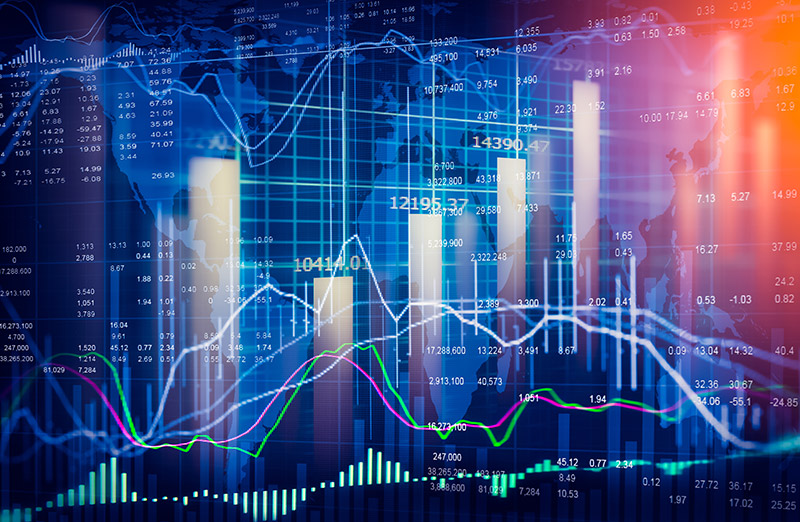2017 in Review

2017 in Review
For me, the story of the year is in interest rates. Rates are key to the movement of currencies, being that currencies are very susceptible to interest rate movements as they are an interest rate bearing product. Across the globe we have had slow rising growth and that has been key to certain economic blocs raising rates and others staying put. This divergence of views and moves has been the key driver for FX this year.
As always, Central Bank Monetary Policy is where the sentiment drive comes from. Although we have had global growth, it has been slow. Unemployment has been low globally, yet wages have stagnated along with inflation. The US Fed has admitted it does not know why inflation has been stagnate, given the economic conditions in the USA. Despite this, the US has raised rates in Dec 2016, March 2017, June 2017 and are at high odds to do so again in December 2017. Historically, as the US raise rates, it’s currency is actually sold off. It is counter intuitive but the US is the global reserve currency so behaves differently. The greenback rallied strongly last year, especially from November on the back of Trump and his election campaign promises, which would see a huge repatriation of offshore dollars come back to the US. Since he’s inauguration however, the market has not believed in him and so it has reverted to old and been sold off as rates have risen. The dollar index fell from 102 down to 91, an 1,100 pip move. It will be interesting to see if his tax-free repatriation promise is in the Tax bill currently being debated between the House and Senate. That may see more strength in the US dollar next year.
Eurodollar was the biggest gainer from the selloff of the greenback, combined with improving economic performance, the ECB has found room to reduce stimulus, but kept rates on hold at zero. The stimulus reduction, and they forward guidance that it was coming, helped the Euro move from 1.04 to 1.21, up 1,700 pips.
In Canada, which oil is a large contributor to its GDP, also found room to raise rates as oil stabilised and rallied itself. The BOC raised rates twice mid-year in two consecutive months, which saw its price improve from 1.37 to 1.21, up 1,600 pips.
Despite Brexit and the worrying headlines, it brings. Despite Theresa May’s lack of leadership and the infighting amongst the Tories, Britain has had very good economic numbers. Due to the massive selloff on the pound in 2016, that weakness has actually helped the Brits. The only economic bloc outside of China to have inflation over 2%, they actually are sitting on inflation of over 3%. This forced the BOE to reluctantly raise rates late in the year. It was the first in over a decade, but Carney did not want to raise them as Brexit issues still abound. I have been a big believe of it and it has outperformed most of its peers this year. Against the greenback it has moved from 1.20 to 1.36, a 1,600 pip run.
Japan has kept both rates and stimulus on hold this year. They had an election and the incumbent government was returned with even more seats. However, as the BOJ sat still, the Yen was moved around by its peers, when not subjected to Risk On/Risk Off environments. The JGB’s still a major safe haven, 2nd only to gold. So, we saw the Yen fluctuate the year in a 600 pip range, from 114 to 108.
Whilst in the Kiwi and Aussie markets, rates have been left steady and so as the world catches up, money has flowed out of the antipodes to get better yield elsewhere. Not to mention the political strife in both these countries. Both of them have governments hamstrung with minority control. The carry trade which held up the AUD and NZD for much of 2011-2015 has slowly evaporated and will continue to accelerate as global rates catch up to the high yielding antipodean bonds. This loss of shine saw the AUD higher than the start of the year by 500 pips, but has come off its highs by 500 pips too. Running from 0.71 to 0.81 to sit at 0.76, even as the Greenback weakened throughout the year.
In New Zealand it is more pronounced, they are pretty much unchanged, opening the year at 0.69 and currently under that with a low of 0.67 in November. Although it did have a high mid-year of 0.75, so a range of 800 pips.
So, as you can see, from those who have been raising rates to those who have not, the clear impact that has on its currency. As a currency is an economic barometer of the country’s health, it really is led by both its local interest rate settings, and in comparison to its peers. Ideally the position is to trade a hawkish central bank against a stagnate or dovish one. If a Central Bank is on hold, there is little volatility in it’s currency. If it is dovish or hawkish then you get volatility. As a trader, we look for volatility to gain a yield, a return. Everyone in the world wants their money to work for them, to gain a return. By understanding Monetary Policy better and the direction of interest rates, you can trade FX successfully to your advantage.
